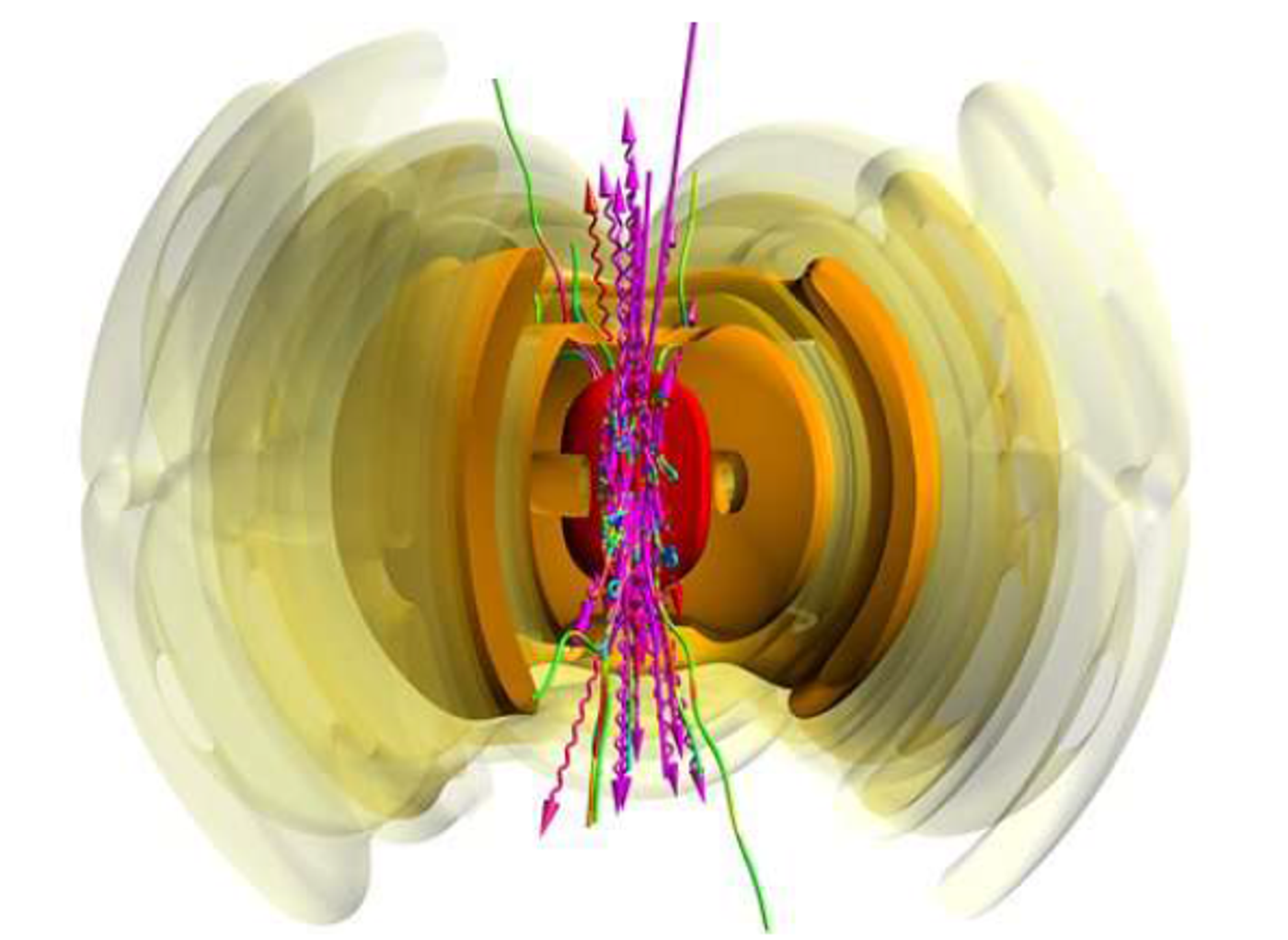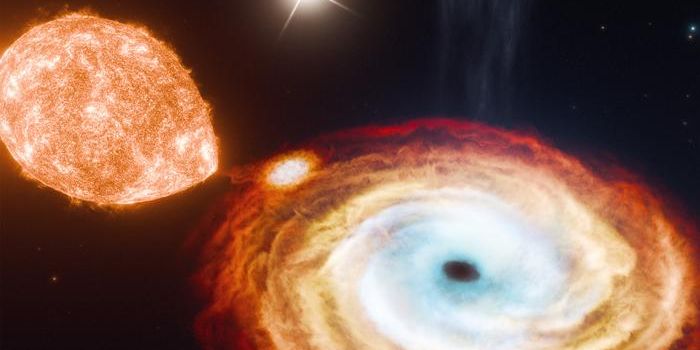The Newly Discovered Gamma Rays are Super Lights
An international team of physicists has produced high-intensity gamma beams that have the energy a billion times higher than photons in visible light. These powerful photons significantly exceed all known limits of lights and can pave the way towards new fundamental discovery in physics.
Trapped particles (green) resulted from gamma laser converts the laser energy (surfaces in red, orange and yellow) into cascades of super-high-energy photons (pink). Credit: Arkady Gonoskov
Scientists have been contemplated the construction of a high energy gamma-ray laser device, also known as the graser. This hypothetically powerful device would be powered by nuclear transitions from a nuclear isomer and could produce coherent high energy gamma rays.
In normal cases, if you shoot a laser at an object, all the photon particles scatter upon contact. But if the laser light has the right parameters and is intense enough, the photons are instead trapped. The cloud of trapped particles efficiently converts the laser energy into cascades of high energy photons and produces a plasma of electrons and positrons.
According to a report published in the journal Physical Review X, the discovery was the result of collaboration between the Chalmers University of Technology in Sweden, Institute of Applied Physics and Lobachevsky University in Russia, and the University of Plymouth in the UK. The construction of a gamma-ray laser involves both basic science and engineering technology. Therefore, the research team has to be interdisciplinary, including experts in the fields of quantum mechanics, nuclear and optical spectroscopy, chemistry, solid-state physics, and metallurgy.
To be able to produce super light source, the researcher needed to tackle the known problems in generating high-intensity gamma beams – the cascade process radiation reaction and rapid electron-positron plasma production, both of which hinder the production of high energy photons.
To overcome these restrictions, they came up with a new source concept, which is based on a controlled interplay between the cascade and anomalous radiative trapping. With the help of specially designed advanced numerical models, they brought their concept into reality by only using a laser power close to 7 PW (petawatt, or 1012 W). By ramping up the laser power to 40 PW, their device generated 109 photons with GeV (gigaelectronvolt, or 109 electronvolts) energies. Their gamma beam achieved a peak brilliance that was unmatched by any beams on record.
The discovery is highly encouraging since many future large-scale laser facilities that are currently under development. "When we exceed the limit of what is currently possible, we can see deeper into the basic elements of nature. We can dive into the deepest part of the atomic nuclei," commented the lead author Arkady Gonoskov, a physicist at the Chalmers University of Technology.
"Our concept is already part of the experimental program proposed for one such facility: Exawatt Center for Extreme Light Studies in Russia. We still don't know where these studies will lead us, but we know that there are yet things to be discovered within nuclear physics, for example, new sources of energy. With fundamental studies, you can aim at something and end up discovering something completely different – which is more interesting and important," added Arkady Gonoskov.
SwissFEL – a new large-scale laser facility. Credit: Paul Scherrer Institute
Source: phys.org









